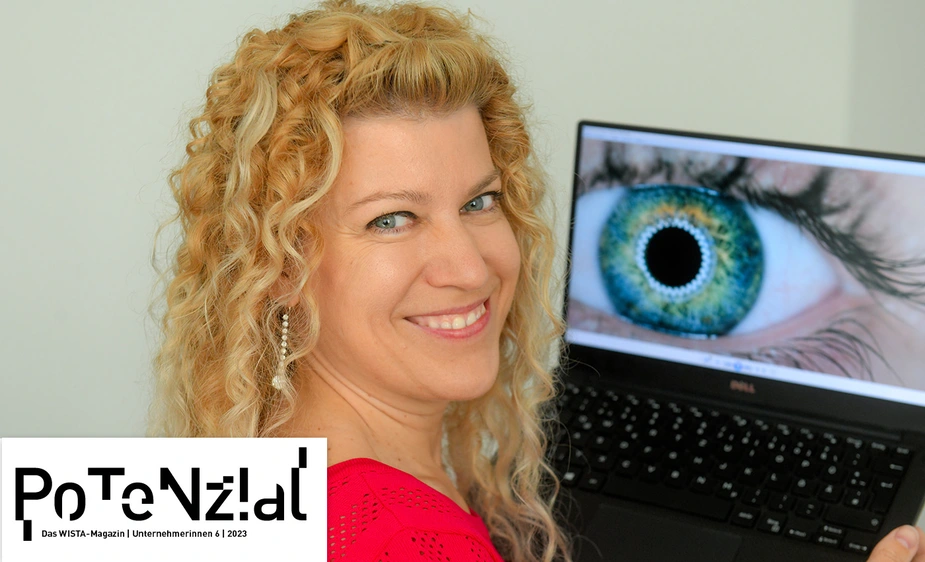Eyes don’t lie
The start-up Amphiprion develops software for biometric identification
Moving to the Charlottenburg Innovation Centre (CHIC) is like a journey back in time for the team of the newly founded start-up Amphiprion. Almost ten years ago, they had already been here to help a newly found company take flight – or rather: to help it see. This time, again, it’s about fleeting visuals.
If you are trying to find Lenka Ivantysynova at CHIC, simply follow her laugh. Amid moving boxes, scattered office furniture, and uncoupled computers, the scientist with a PhD in computer science beams at her arriving visitors. Here we go again. A new company. For her, that German adage of every new beginning holding magic within is evidently true.
Together with Tobias Scheffer, professor for IT at the University of Potsdam and head of the machine learning group there, as well as Peter Haider, who completed his doctorate in Scheffer’s group, Ivantysynova ventured to establish Amphiprion GmbH in August 2023. Its namesake is Amphiprion ocellaris, the false percula clownfish, which lives symbiotically with poisonous anemones. They grant it personal access to their tentacles to protect it from predators. “Our new company is precisely about these types of unambiguously secure access control,” she says. Amphiprion is developing a novel way of biometric identification, which, unlike solutions based on fingerprints, facial recognition, and iris scans, is virtually insurmountable. At its heart is the so-called Gaze ID technology. With it, it is possible to unequivocally identify individuals based on involuntary micro-movements of the eye. Based on this method that the start-up is further developing, the system can even tell identical twins apart. At the same time, it is based on machine learning methods, making the software so lean that it could be embedded into smartphones. “However, we are starting by targeting the access control systems market for high-security areas,” says the business founder. Here, the risk is higher that unauthorised persons try to outsmart iris scanners with printed lenses, facial recognition systems with deceptively real-looking masks, or fingerprint scanners with manipulated fingerprints. “You cannot control the dynamic micro-movements of your eyes,” she says.
During your correspondent’s visit, Amphiprion had rented two rooms. Despite being at an early stage, the team is already growing its staff. This is partly due to its history, which also began at CHIC in 2014. Back then, Ivantysynova, Haider, and Scheffer founded Asaphus Vision GmbH, which was also dedicated to interpreting the human gaze. Specifically, to systems built in vehicles that identify symptoms of tirednesss, emotional states, and alertness in drivers with a method based on posture and head position, and monitor whether drivers will register impending collisions based on the direction of their gaze. Here, too, the analysis is based on neural nets so that the software generates reliable results despite using only limited amounts of computing power. And, again, the team chose a namesake from the animal world: The Asaphus was a prehistoric crawler with stalk eyes that could move independently of one another. This kind of all-round vision is precisely what the start-up’s software offers. The team sold the company to Valeo, an auto parts supplier, in March 2023 – and now has not only more time but also more funds to establish its new business. “Moreover, we now have experience we didn’t have when we founded our first company,” says Ivantysynova. Whether it’s building an organisation, leading employees, or initiating and maintaining contacts with clients: They all feel better prepared and plan on kicking it up a notch with Amphiprion. “To do so, we sooner or later want to seek out venture capital,” she says. After all, there is a global demand for Gaze ID. “Therefore, our business model is capable of rapid scaling.” But, for now, the cheerful business founder will dedicate herself to fitting out the new office space.
Peter Trechow for POTENZIAL
